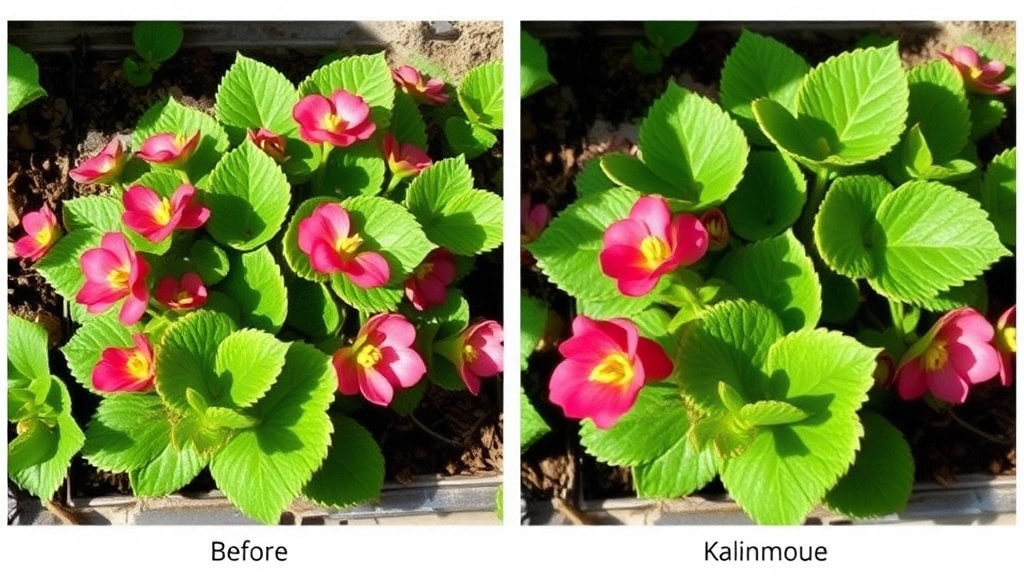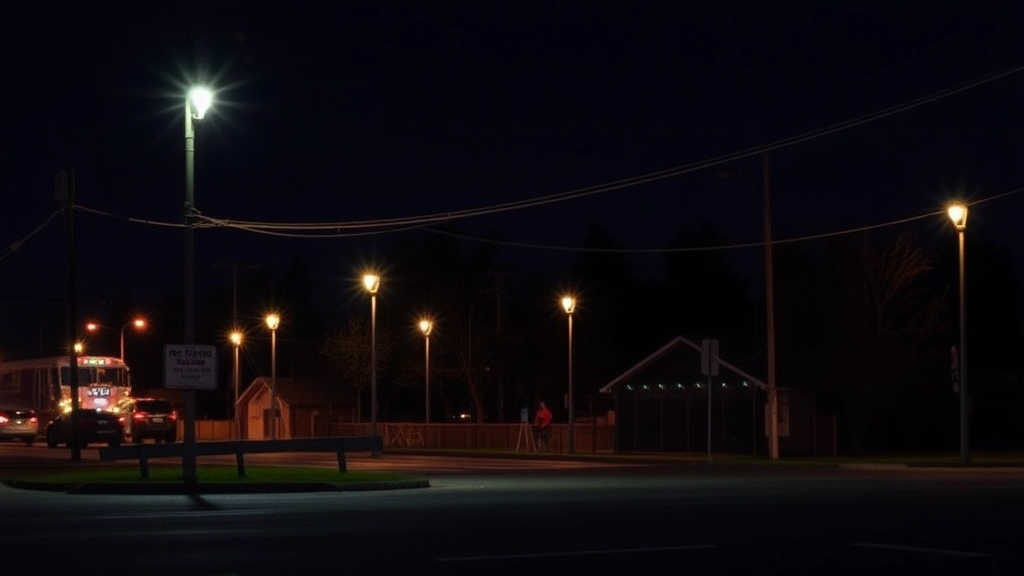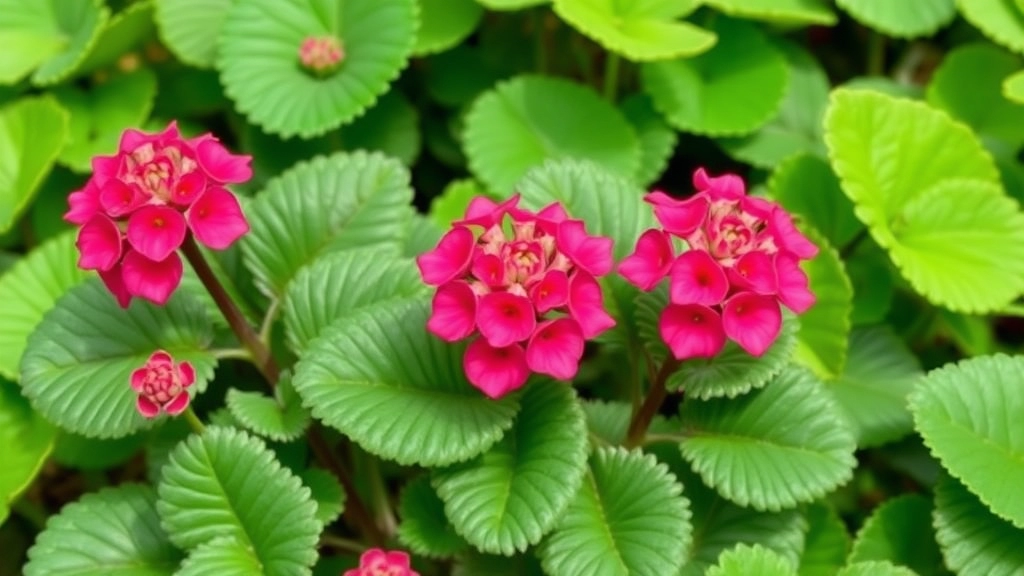Can Kalanchoe Grow in Shade?
Wondering if Kalanchoe can grow in shade? You’re not alone. Many plant enthusiasts like myself have pondered this question. Let’s dive into the specifics and find out how this resilient plant fares in less sunny spots.
Light Needs of Kalanchoe
While Kalanchoe typically thrives in bright, indirect light, it can adapt to shadier conditions with a bit of care. Understanding its light needs can help you keep your Kalanchoe healthy and vibrant, even in less-than-ideal lighting.
Optimal Growing Conditions for Kalanchoe
When it comes to nurturing Kalanchoe, many gardeners often wonder: What are the best conditions for this resilient succulent?
Kalanchoe thrives in environments that mimic its native habitat, which is typically warm and dry. Here’s a breakdown of the optimal growing conditions for your Kalanchoe:
Effects of Shade on Kalanchoe Growth

So, you might be wondering how shade really impacts your Kalanchoe.
These vibrant little succulents love their sunshine, but what happens when they don’t get enough of it?
Reduced Growth Rate
In shaded areas, Kalanchoe can struggle to thrive. You might notice:
- Slower growth: Without ample light, they can take their sweet time growing.
- Leggy appearance: They might stretch towards the light, leading to an elongated, less attractive look.
Faded Colours
You might also see a change in their vibrant hues.
- Less vibrant foliage: The leaves can lose their rich green colour and appear dull.
- Fewer blooms: Flowering may be sparse or non-existent without enough light.
Increased Susceptibility to Pests
Shade can also make your Kalanchoe more vulnerable.
- Pest problems: Weaker plants are easier targets for pests like mealybugs and aphids.
- Fungal issues: Damp, shaded conditions can lead to fungal diseases, especially if the air circulation isn’t great.
So, while Kalanchoe can survive in lower light, it’s not their ideal environment.
Tips for Growing Kalanchoe in Shaded Areas
If you’re wondering how to nurture Kalanchoe in less-than-ideal lighting, you’re not alone. Many plant enthusiasts face the challenge of growing these beautiful succulents in shaded areas. Fortunately, with the right approach, you can still enjoy their vibrant blooms.
1. Choose the Right Variety
Not all Kalanchoe varieties thrive in low light.
- Kalanchoe blossfeldiana is more forgiving.
- Kalanchoe tomentosa (Panda Plant) also adapts well.
2. Adjust Watering Habits
In shaded conditions, Kalanchoe requires less water.
- Check for dryness: Allow the top inch of soil to dry before watering.
- Avoid soggy soil: This prevents root rot, a common issue in low-light environments.
3. Use Quality Potting Mix
A well-draining potting mix is crucial.
- Cactus soil or a mix that includes perlite can work wonders.
- Avoid heavy soils that retain too much moisture.
4. Provide Indirect Light
While Kalanchoe can tolerate shade, they still need some light.
- Place near a window: Aim for filtered sunlight to boost growth.
- Rotate the pot: This ensures even exposure to available light.
5. Fertilisation Strategy
Feeding your Kalanchoe in shaded areas requires a delicate balance.
- Use a diluted liquid fertiliser during the growing season (spring and summer).
- Cut back in autumn and winter when the plant is dormant.
6. Monitor for Pests
Shaded conditions can sometimes lead to pest issues.
- Regular checks: Look for signs of mealybugs or aphids.
- Natural remedies: Use insecticidal soap if needed.
Common Issues and Solutions in Low Light

When growing Kalanchoe in shaded areas, you may encounter specific challenges that can hinder their growth. Understanding these issues and how to address them is crucial for maintaining healthy plants.
1. Insufficient Growth
Concern: Kalanchoe may appear leggy or weak due to inadequate light.
Solution:
- Rotate Your Plant: Regularly turn your Kalanchoe to ensure all sides receive some light.
- Pruning: Trim back leggy growth to encourage bushier, more compact growth.
2. Leaf Drop
Concern: Leaves may start to drop off, indicating stress.
Solution:
- Check Watering: Ensure you’re not overwatering. Kalanchoe prefers slightly dry soil.
- Humidity Levels: Maintain moderate humidity; too much moisture can lead to leaf drop.
3. Pest Infestations
Concern: Low light can make Kalanchoe more susceptible to pests like mealybugs and aphids.
Solution:
- Regular Inspections: Check the undersides of leaves for pests.
- Natural Remedies: Use neem oil or insecticidal soap to treat infestations.
4. Fungal Issues
Concern: Inadequate air circulation in shaded areas can lead to fungal diseases.
Solution:
- Improve Airflow: Space out your plants to ensure good air circulation.
- Watering Technique: Water at the base to keep leaves dry and reduce the risk of fungal growth.
5. Nutrient Deficiency
Concern: Shaded conditions may slow nutrient uptake, leading to poor plant health.
Solution:
- Fertilize Wisely: Use a balanced, diluted liquid fertilizer during the growing season.
- Soil Quality: Ensure well-draining soil that retains some nutrients.
Alternative Light Sources for Indoor Kalanchoe
If you’ve been struggling to provide sufficient light for your indoor Kalanchoe, you’re not alone. Many plant enthusiasts face the same challenge, especially when natural light is limited.
Fortunately, there are several alternative light sources that can help your Kalanchoe thrive indoors.
Types of Light Sources
- LED Grow Lights
- Energy-efficient
- Last longer than traditional bulbs
- Available in various spectrums to support plant growth
- Fluorescent Lights
- Affordable and widely available
- Good for small spaces
- Provide a balanced light spectrum
- Incandescent Bulbs
- Less efficient but can be used in a pinch
- Produce a lot of heat, so keep them at a distance
Placement Tips
- Distance Matters: Position your light source about 12-24 inches above the plant to prevent burning the leaves.
- Duration: Aim for 12-14 hours of light daily to mimic natural sunlight.
- Rotation: Rotate your Kalanchoe regularly to ensure even light exposure.
Monitoring Plant Health
Keep an eye on your Kalanchoe for signs of light stress. Yellowing leaves can indicate too much light, while leggy growth suggests insufficient light. Adjust your light source accordingly. For more tips on dealing with leggy growth, check out our guide on how to fix a leggy Kalanchoe.
If you notice other issues such as yellowing leaves, you might want to explore our comprehensive guide on why Kalanchoe leaves turn soft and how to fix it.
FAQs on Growing Kalanchoe in Shade
Can Kalanchoe grow in shade?
While Kalanchoe can survive in shaded areas, it is not their ideal environment. They thrive best in bright, indirect sunlight.
What are the effects of growing Kalanchoe in shade?
Growing Kalanchoe in shaded areas can lead to slower growth, a leggy appearance, less vibrant foliage, fewer blooms, and increased susceptibility to pests and fungal diseases.
How can I address insufficient growth in shaded Kalanchoe?
To address insufficient growth, you can rotate your plant regularly to ensure all sides receive some light and prune leggy growth to encourage bushier, more compact growth.
Why are my Kalanchoe leaves dropping?
Leaf drop in Kalanchoe can indicate stress, often due to overwatering or high humidity levels. Ensure you’re not overwatering and maintain moderate humidity levels.
How can I prevent pest infestations in shaded Kalanchoe?
Regularly inspect your Kalanchoe for pests, especially the undersides of leaves. Use natural remedies like neem oil or insecticidal soap to treat infestations.
What should I do if my Kalanchoe develops fungal issues?
Improve air circulation by spacing out your plants and water at the base to keep leaves dry. This reduces the risk of fungal growth.
How can I ensure my shaded Kalanchoe gets enough nutrients?
Use a balanced, diluted liquid fertilizer during the growing season and ensure the soil is well-draining but retains some nutrients.
References
-
Growing Kalanchoe Indoors – Gardening Know How
-
Kalanchoe Plant Care – The Spruce
-
Kalanchoe: How to Grow and Care for Kalanchoe Plants – The Old Farmer’s Almanac
